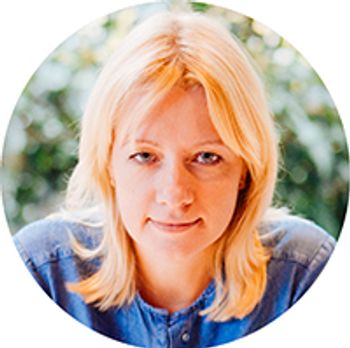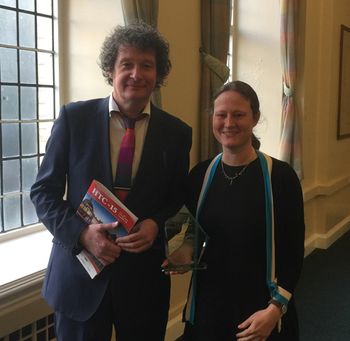Articles by Alasdair Matheson

Per- and polyfluoroalkyl substances (PFAS) in surface water have become a major concern due to their persistency and toxicity. We recently spoke to Stefan Van Leeuwen and Bjorn Berendsen of Wageningen Food Safety Research (WFSR), in The Netherlands, about their novel research into non-targeted PFAS screening using an LC–HRMS method with fragment ion flagging.

In the first of the series, Mariosimone Zoccali, discusses the development
of a powerful analytical method to analyze important bioactive molecules using online SFE–SFC–QqQ-MS.

A panel discussion on the latest advances and future developments in data handling.

The Column spoke to Martin Giera of Leiden University Medical Center about his innovative research using GC–MS in bioanalysis applications.

LCGC Europe spoke to Yada Nolvachai about a new approach that offers “super-resolution” for comprehensive two‑dimensional gas chromatography (GC×GC) methods.

A panel discussion on the latest advances and future developments in sample preparation.

LCGC Europe spoke to André Striegel about the role and benefits of interaction polymer chromatography (IPC) for polymer analysis.

A panel discussion on the latest advances and future developments in gas chromatography mass spectrometry (GC–MS).

A novel chemical fingerprinting method has been developed using multidimensional chromatography and multivariate analysis to investigate potential arson attacks. The Column spoke to Oliver Jones and Jessica Pandohee of RMIT University in Melbourne, Australia, about their research in this field.

A panel discussion on the latest advances and future developments in liquid chromatography mass spectrometry (LC–MS).

LCGC Europe spoke to Ton Brooijmans, from DSM Coating Resins in The Netherlands, about the array of innovative techniques he has recently implemented in his laboratory to analyse polymers. These include the development of a selective derivatization technique followed by size‑exclusion chromatography (SEC) to analyze polymeric carboxylic acid functionality, the benefits of non-aqueous ion‑exchange chromatography (NAIEC) for analysing synthetic macromolecules, and the important role of pyrolysis gas chromatography (Py‑GC–MS) in polymer analysis. Brooijmans also discusses future trends in this application area.

Filip Cuyckens from Janssen R&D in Belgium spoke to LCGC Europe about recent innovative approaches he and his team developed to support drug metabolism and pharmacokinetic studies, and the inventive role that two-dimensional liquid chromatography (2D-LC) plays in his laboratory to boost sensitivity, solve recovery issues, and increase overall efficiency.

LCGC Europe spoke to Leon Barron and Matteo Gallidabino to discuss novel nontargeted approaches to analyze explosive materials using ion chromatography (IC) with high resolution mass spectrometry (HRMS), and the challenges and solutions analysts can encounter when developing nontargeted methods.

In the second part of this interview on size-exclusion chromatography (SEC) André Striegel discusses the benefits of the technique to analyze nanoparticles and quantum dots, the complementary role of hydrodynamic chromatography (HDC), and the future of SEC in two-dimensional liquid chromatography (2D-LC) separations.
![LCE0918_Liu Bio[2]-1.jpg](https://cdn.sanity.io/images/0vv8moc6/chroma/bdc67a7da979cf6ba6cf989305aae36e6b3a9575-200x262.jpg?w=350&fit=crop&auto=format)
LCGC Europe spoke to Zhanfei Liu from the Marine Science Institute at the University of Texas at Austin, Texas USA, about the advantages of ramped pyrolysis GC–MS to analyze petroleum pollution from the Deepwater Horizon oil spill.

André Striegel spoke to LCGC Europe about innovations in size-exclusion chromatography (SEC) in polymer analysis, including the benefits of hyphenating SEC with on-line multi-angle static light scattering (MALS) and differential refractometry (DRI) detection, the non-trivial nature of a “trivial” solution, the complementary value of “interaction” polymer liquid chromatography (LC) techniques, and the role of quintuple detection in practice.

Lipidomics is one of the youngest branches of “omics” research. Maria Fedorova from Leipzig University, in Leipzig, Germany, discusses the latest trends and challenges in lipidomics research and highlights how innovative bioinformatics solutions are addressing data handling issues in this evolving field.

Data-independent acquisition (DIA) makes it possible to re-interrogate data from earlier analyses to determine if new compounds
have appeared in a sample previously analyzed. In this interview, Craig Wheelock of the Karolinska Institute discusses the use of DIA
in metabolomics.

LCGC Europe spoke to Yong Liu and Adam Socia from MSD about the cost-saving benefits of implementing green chromatography in the pharmaceutical sector, the importance of analytical method volume intensity (AMVI), and effective practices to reduce solvent consumption and replace harmful solvents, including supercritical fluid chromatography (SFC), fast chromatography, and “cocktail chromatography”.

LCGC Asia Pacific spoke to Yong Liu and Adam Socia from MSD about the cost-saving benefits of implementing green chromatography in the pharmaceutical sector, the importance of analytical method volume intensity (AMVI), and effective practices to reduce solvent consumption and replace harmful solvents, including supercritical fluid chromatography (SFC), fast chromatography, and “cocktail chromatography”.

LCGC Europe spoke to Alina Muscalu from the Organic Contaminants Section at Ontario Ministry of the Environment, Conservation and Parks (MECP) in Toronto, Canada, about the practical advances in environmental analysis using comprehensive GC×GC for targeted and nontargeted analysis, the role of GC×GC in routine analysis, and the benefits of using a micro-electron capture detector (μECD) for environmental analysis.

Is gas chromatography a mature technology? LCGC Europe spoke to Ronda Gras about a range of GC projects she has been working on to extend the scope of the technique, including a multi-hyphenated approach combining three modes of detection, a miniaturized micromachined GC system, and a novel in situ method to detect carbon dioxide in various matrices by incorporating 3D-printing technology in a FID.

A discussion of challenges in mycotoxin analysis, a new multi-analyte method that does not require sample cleanup, and how analytical chemistry can help reduce contamination by these toxins along the food chain.

LCGC Europe spoke to Guilherme L. Alexandrino from the University of Copenhagen, Denmark, about the benefits of combining a modern “pixel-based” chemometrics technique with comprehensive two‑dimensional gas chromatography (GC×GC) in petroleomics applications.

Agilent Technologies and the University of Duisburg-Essen will collaborate to combine the company’s analytical technologies with the university’s researchers.

Craig Wheelock discusses the obstacles facing chromatographers involved in metabolomics and the benefits of data independent acquisition-mass spectrometry (DIA-MS) in this field.

Mira Petrovic from the Catalan Institute for Water Research (ICRA) in Girona, Spain, reveals the advantages and practical applications of a novel method she developed for the multiresidue trace analysis of pharmaceutical compounds and their corresponding metabolites and transformation products using dual-column liquid chromatography (LC) coupled to tandem mass spectrometry (MS/MS).

Carolin Huhn was awarded the inaugural 2018 LCGC Europe/HTC Innovation Award on 25 January 2018 at 15th International Symposium on Hyphenated Techniques in Chromatography (HTC-15) in Cardiff, UK.

Mira Petrovic from the Catalan Institute for Water Research (ICRA) in Girona, Spain, reveals the advantages and practical applications of a novel method she developed for the multiresidue trace analysis of pharmaceutical compounds and their corresponding metabolites and transformation products using dual-column liquid chromatography (LC) coupled to tandem mass spectrometry (MS/MS).

LCGC Europe is celebrating a glorious past and looking ahead to a buoyant future.















![LCE0918_Liu Bio[2]-1.jpg](https://cdn.sanity.io/images/0vv8moc6/chroma/bdc67a7da979cf6ba6cf989305aae36e6b3a9575-200x262.jpg?w=350&fit=crop&auto=format)










